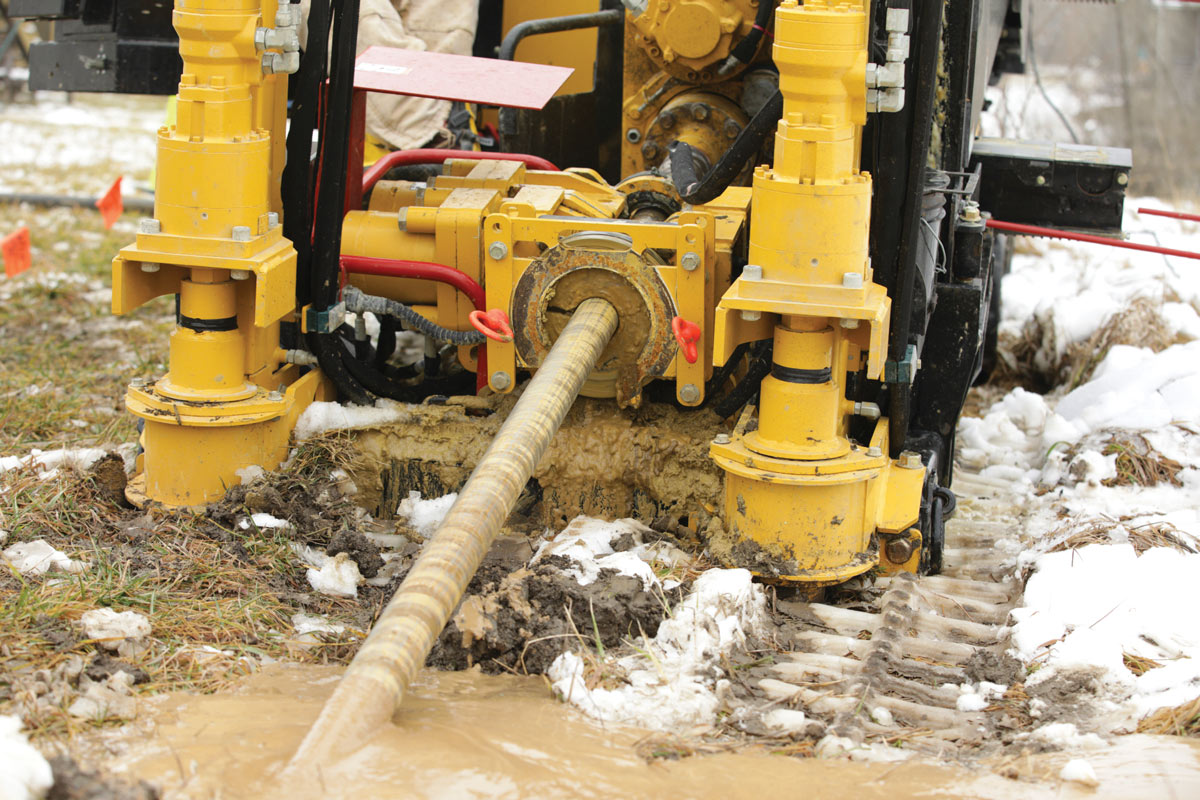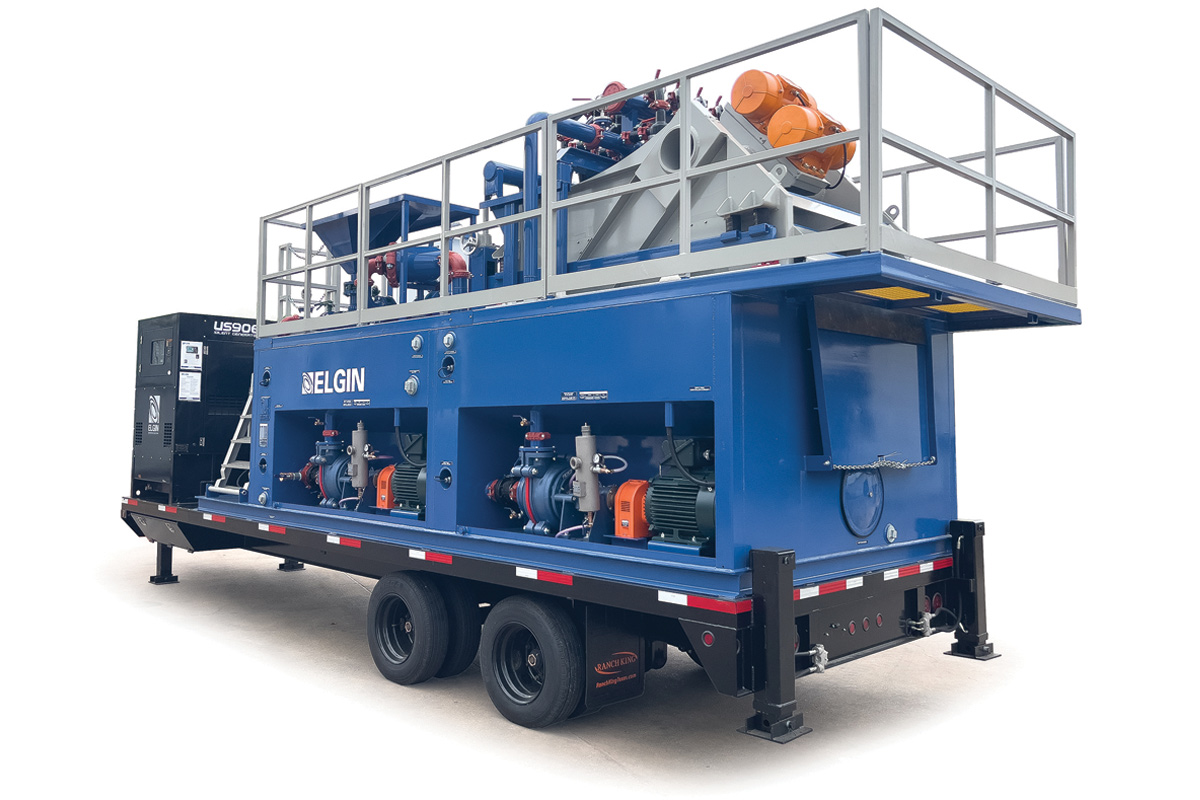Mud Recycling Systems Operating & Maintenance Tips

1. Mud recycling systems in general do notrequire a degree in chemistry to run and operate but it is a must that theoperator has some training and understanding of how the unit works and operatesin order to get the most out of the system. Most manufacturers are more thanhappy to send a technician out with a new unit to do the initial startup andtraining in the proper operation of that particular unit. If follow-up trainingis required for whatever reason, most manufacturers have people available tosend to do the followup training.
2. At minimum, there are a few tools thatyou should have on every mud recycling system that you have in your fleet. AMarsh funnel is a must; without this, there is no way to accurately know whatthe viscosity is of your drilling fluid. The next must-have item is a sandcontent kit, which measures the amount of sand in your drilling fluid. Withoutthis piece of equipment, there is no way to accurately know how well your mudsystem is performing. Finally, a mud scale should be a part of your mud kit. Themud scale is exactly what it sounds like: It is a scale designed to measure theweight of a given amount of drilling fluid. This can tell you how many ultrafines are in your drilling fluid. The ultra fines are the particles too small tobe measured by the sand content kit. All of these tools mentioned are fairlyinexpensive and easy to use with minimal training. Without them, there is no wayof knowing how well your system is working or how good your drilling fluidis.
3. Screen selection is a big question mostmanufacturers get asked about and it is probably the hardest question to answer.As manufacturers, we can recommend screens that are most common and willprobably do the job. But without being
on the job to see the conditions, itis hard to know the best screen mesh for the job. Screens are expensive and, forthe most part, fragile so most contractors don’t want to have a bunch of themlaying around the jobsite to get ruined. However, if the soil conditions changeand you need a different mesh to get the solids out and you didn’t bring anyother mesh screens, then you might have to drill with dirty mud for a few daysuntil you can get the correct mesh. And by then, you may have done hundreds oreven thousands of dollars of damage to your mud pump or your mud motor. Thescreens are the first line of defense in your mud system and it is important tokeep them in good shape and change them as needed.
4. Hydrocyclones are pretty simple indesign and don’t require a lot of maintenance. One thing to check every so oftenis the cone manifold pressure. The cones operate at approximately 32 psi and ifthat pressure falls off considerably, then the cones will not perform at optimumperformance. This will result in drilling mud that is not as clean as it shouldbe. If the pressure falls off, it is usually because part of the cone is washingout from the abrasives being pumped through it. If you separate the cone andlook inside, you will see a swirling effect. This swirling effect is a definitesign that the cone needs replaced. The inside of a new cone will have a smoothtapered wall. The other most common reason for low cone manifold pressure is aworn out impeller in the cone feed centrifugal pump. If the impeller is wornout, it will not be able to move enough fluid to build the required pressure andwill have to be replaced or repaired. There are other items that couldcontribute to low cone manifold pressure, but these are the two most commoncauses.
5. Centrifugal pumps are simple pumps tomaintain but some things should be done to ensure you are getting the most outof them. Centrifugal pumps that use square rope packing will have a grease zerkon them, usually at the top of the packing gland. This grease zerk should havetwo to three shots of grease for every couple of hours of operation. You shouldalso check the packing every few hours for excessive leakage. Centrifugal pumpsthat use this square rope packing should never have the packing tightened sotight that the packing quits dripping at all. If you tighten the packing thistight, it will burn the shaft and then you will be forced to replace the shaft,as you will not be able to keep packing in the packing gland. Centrifugals thatuse mechanical seals do not leak fluid and generally require less maintenance —but they do cost more to initially purchase. The centrifugal will either havebearings that are in an oil bath or there will be a grease zerk at the top ofeach bearing housing that you will have to grease every few hours when you arechecking the packing. Oil bath types only need to have the oil level checkedonce a day. Pay attention to the condition of the oil while you are checking itto ensure it doesn’t have water or drilling mud in it.
6. Shakers, depending on the manufacturerand the screen type, can differ quite a bit. The main thing with any shaker isto make sure the screens in the shaker do not have holes of any size in them andthat they are not blinded off. A screen with a hole the size of a nickel canallow a lot of sand and gravel to enter the mud system, causing huge headachesdown the road. Imagine you have a hole the size of a nickel and a few rocks thesame size get into the system. Now imagine they get picked up by the desiltercone feed pump. These rocks, the size of nickels, are now stuck in the end ofyour desilter cone and the only way to get them out is to take the cone apartand remove it by hand. This operation takes a minimum of five to 10 minutes. Assoon as you reassemble the cone and turn the system back on, be assured that youwill have another one picked up and stuck in the end of the cone. If you do thisall day or night it starts to eat up a lot of time and can get costly, as youwill have to shut the rig down because you can’t keep up. Regarding the blindedoff screens, this happens when the diameter of the sand is just big enough toget stuck in the open area of the screen mesh. This plugs the mesh and if enoughof this happens you can end up with 50 to 75 percent of your screen unusable.You may need to go to the next finer mesh screen and see if this helps. However,many times you can take the screen off and turn the screen around, using yourpressure washer you can blast the stuck sand particles out of the screen andreuse the screen.
Hopefully these are some good tips that will help contractors get betterresults and longer life out of your mud recycling systems.




